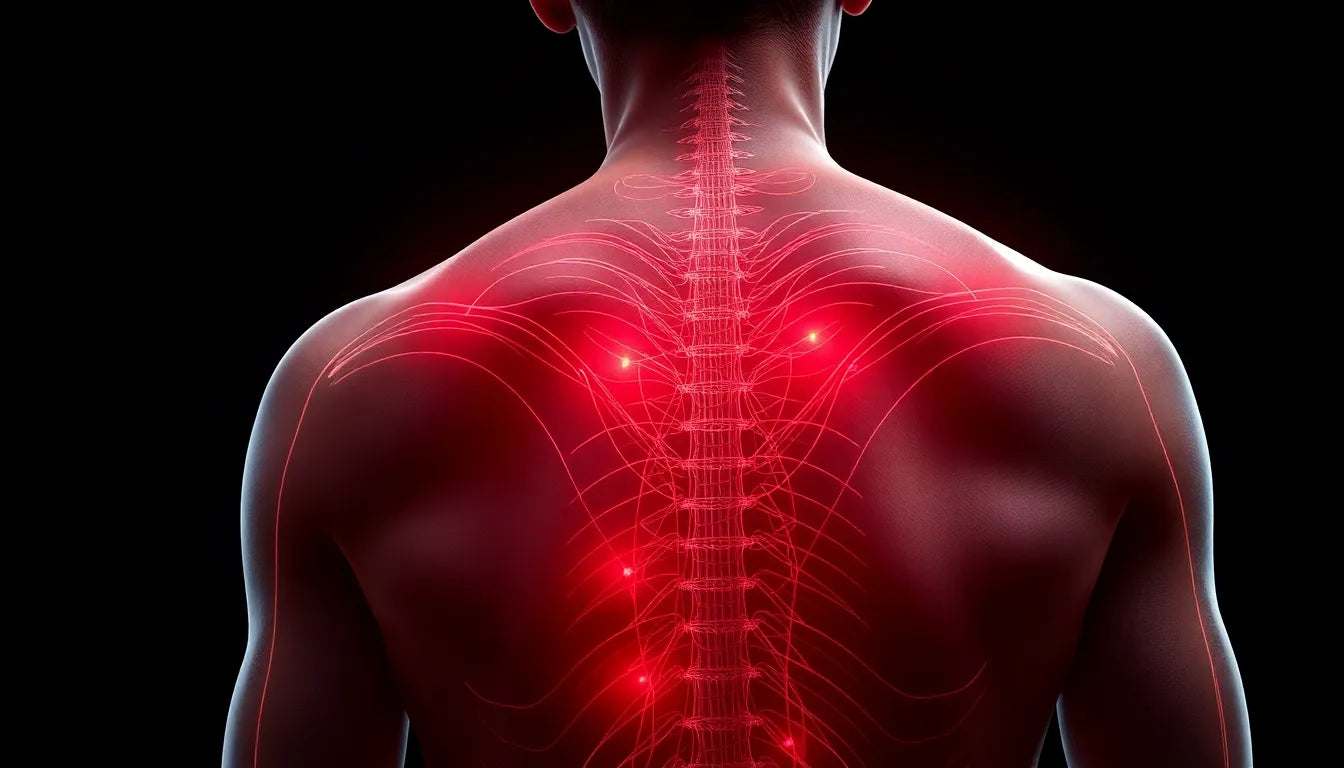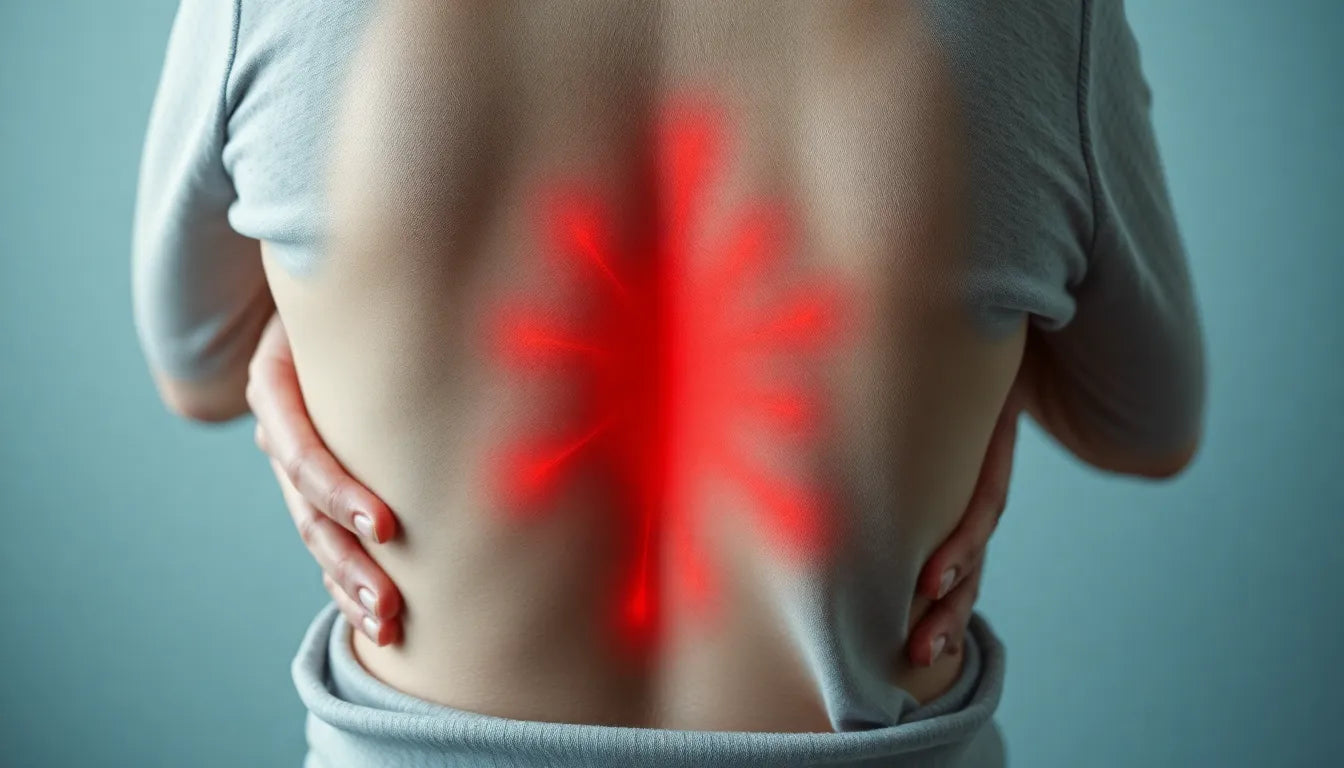Back pain in horses is a common issue that can significantly impact their well-being and performance. If you've noticed your horse showing signs of discomfort or a decline in performance, it might be time to investigate whether back pain is the culprit. Understanding and addressing these issues is crucial for maintaining your horse's health, comfort, and longevity.
Horses, much like humans, can suffer from various forms of back pain, which can lead to chronic pain if left untreated. This discomfort can manifest in several ways, from physical symptoms to changes in behavior. If not properly addressed, these issues can not only affect your horse's physical health but also their mental state, leading to behavioral changes that can be challenging to manage.
In this blog post, we will delve into the symptoms that might indicate your horse is experiencing back pain, explore the potential causes of these issues, and discuss the available treatment options. Moreover, we will provide you with prevention strategies to help you ensure your horse remains healthy and pain-free. The goal is to empower you, as a horse owner, with the knowledge needed to help your equine companion thrive.
By identifying the signs early and understanding the underlying causes, you can take proactive steps to address and manage back pain in horses. From physical symptoms like a lowered back and sore lumbar muscles to behavioral signs such as irritability during saddling, recognizing these indicators is the first step in providing relief. Additionally, understanding the mechanical issues or secondary effects that could be contributing to your horse's discomfort is vital.
Treatment options are varied and can include therapies such as acupuncture, osteopathy, chiropractic care, craniosacral therapy, and laser therapy. These methods aim to restore balance, reduce pain, and promote healing. However, the importance of active rehabilitation and strength training should not be underestimated, as these can play a crucial role in recovery and long-term health.

Lumbar support belt
Stabilises and relieves the lower back, suitable for pain and tension relief during daily activities.
Preventive measures are equally important. Ensuring proper saddle fitting, regular veterinary check-ups, and considering alternative therapies like magnetic field therapy can all contribute to preventing back pain. Collaborating with veterinarians, trainers, and alternative therapy specialists can provide a comprehensive approach to your horse's care, ensuring the best possible outcomes.
Stay tuned as we explore these topics in more depth, providing you with the tools and knowledge to effectively manage and prevent back pain in your horse, ensuring their health and happiness for years to come.
Recognizing symptoms of back pain in horses
Back pain in horses can manifest through a variety of physical symptoms, which are crucial for horse owners to recognize. One of the most noticeable signs is a sænket ryg, or lowered back, which can indicate discomfort or pain in the spinal region. Additionally, horses may exhibit ømme muskler i lænden, or sore lumbar muscles, which can be felt upon palpation. This discomfort often leads to a change in posture, such as bagudrettede bagben, where the hind legs are positioned backward to alleviate pressure on the back.
Furthermore, you might notice a nedsat smidighed, or reduced flexibility, particularly during movement or exercise. This can manifest as stiffness or reluctance to perform certain movements, such as bending or turning. During riding, horses with back pain may show problemer under ridning, such as difficulty with galloping or maintaining a collected frame. These physical symptoms are often accompanied by behavioral changes, making it essential to observe both aspects for a comprehensive assessment.
Behavioral signs indicating discomfort
Behavioral changes can be just as telling as physical symptoms when it comes to identifying back pain in horses. One common sign is surhed ved sadling, or irritability during saddling. This can include pinning ears, swishing the tail, or even attempting to bite when the saddle is placed or adjusted. Additionally, hovedrysten, or head shaking, can occur as a response to discomfort, especially if the pain is exacerbated by the pressure of the tack.
These behavioral indicators are critical to note, as they can often precede more obvious physical symptoms. By paying attention to these subtle changes, horse owners can catch potential back issues early, leading to more effective management and treatment.
Exploring the causes of back pain
Understanding the underlying causes of back pain in horses is essential for effective treatment. Mechanical issues such as biomekaniske fejl, or biomechanical faults, can arise from poor posture or movement patterns. Another common cause is forkert sadeltilpasning, or incorrect saddle fit, which can create uneven pressure points and lead to discomfort over time.
Secondary effects from other physical issues, like haltheder eller benproblemer (lameness or leg issues), can also contribute to back pain. When a horse compensates for pain in one area, it can inadvertently strain the back, leading to further complications. Identifying these root causes is crucial for developing a tailored treatment plan that addresses the specific needs of the horse.
Effective treatment options for back pain
There are several therapeutic approaches available to manage and alleviate back pain in horses. Akupunktur (acupuncture) and osteopati/kiropraktik (osteopathy/chiropractic) are popular methods that focus on restoring balance and promoting healing through targeted pressure and manipulation. Kraniosakral terapi (craniosacral therapy) and laserterapi (laser therapy) are also used to reduce inflammation and enhance recovery.
Physical therapy plays a vital role in rehabilitation, emphasizing the importance of active rehabilitation and strength training over passive rest. Exercises designed to improve core strength and flexibility can significantly aid in recovery, helping to support the back and prevent future issues. By incorporating these treatments, horse owners can help their equine companions regain comfort and mobility.

Men's Posture Shirt™ Zipper - Black
Patented shirt that activates muscles and can relieve pain and tension in back, neck, and shoulders.
Conclusion
Addressing back pain in horses requires a comprehensive approach that combines symptom recognition, understanding of underlying causes, and effective treatment strategies. By staying vigilant for both physical and behavioral signs, horse owners can ensure timely intervention. With a range of therapeutic options available, from acupuncture to physical therapy, there are numerous pathways to help your horse overcome back pain and maintain a healthy, active lifestyle. In the next section, we will explore preventive measures and long-term care strategies to further support your equine friend's well-being.
Prevention and long-term care for horses with back pain
Preventing back pain in horses is not only about addressing current issues but also implementing strategies that promote long-term health. Early consultation with a veterinarian is crucial for accurate diagnosis and effective treatment planning. Regular check-ups can help identify potential problems before they become severe, ensuring your horse remains in optimal health.
Proper saddle fitting is another critical preventive measure. An ill-fitting saddle can cause significant discomfort and lead to chronic back issues. Regularly checking and adjusting the saddle to suit your horse’s changing body shape is essential. Additionally, introducing magnetfeltterapi (magnetic field therapy) can be a beneficial preventive tool. This therapy helps improve blood circulation, potentially reducing the risk of developing back pain.
Collaboration for best results
A multidisciplinary approach is often the most effective way to manage and prevent back pain in horses. Collaborating with veterinarians, trainers, and alternative therapy specialists ensures a comprehensive care plan that addresses all aspects of your horse's health. Regular communication and updates among all parties involved are vital to adapt treatment plans as needed and to monitor progress.
By working together, you can create a supportive environment that not only addresses existing issues but also strengthens your horse’s overall health, reducing the likelihood of future problems.
Frequently Asked Questions
What are the first signs of back pain in horses?
The initial signs of back pain in horses can include changes in behavior, such as irritability during saddling, and physical symptoms like a lowered back or reduced flexibility. Observing these early indicators can lead to timely intervention and treatment.
Can back pain in horses be completely cured?
While many cases of back pain in horses can be significantly improved with appropriate treatment and management, complete recovery depends on the underlying cause and the horse's overall health. Ongoing management and preventive care are crucial to prevent recurrence.
How often should I check my horse's saddle fit?
It is recommended to check your horse's saddle fit at least twice a year, or more frequently if your horse is undergoing significant changes in condition or muscle development. Regular adjustments ensure the saddle remains comfortable and supportive.
Are there specific exercises I can do with my horse to prevent back pain?
Yes, incorporating exercises that enhance core strength and flexibility can help maintain a healthy back. Simple routines such as ground poles, hill work, and stretching exercises are effective in supporting back health.
When should I consult a veterinarian about my horse's back pain?
You should consult a veterinarian if you notice persistent signs of discomfort, such as behavioral changes or difficulty during riding. Immediate attention is warranted if these symptoms are severe or accompanied by other health issues.
By understanding and implementing these strategies, horse owners can effectively manage and prevent back pain, ensuring their equine companions remain healthy and happy for years to come.
Kilder
- HorsemagDK. ”Rygsmerter hos heste: Symptomer, behandling og årsager.”
- Duetove. ”Rygsmerter hos heste: Årsager og symptomer.”
- Equi-librium. ”Kiropraktik og behandling af heste.”
- Vetgruppen. ”Rygsmerter hos heste: Behandling og forebyggelse.”
- Netdyredoktor. ”Hestens lænd og rygproblemer.”
- Kranio-hest. ”Hals-, ryg- og lændesmerter hos heste.”
- Agria. ”Rygproblemer rammer oftest rideheste: Undgå at din hest bliver ramt.”
- Equifysio. ”Tegn på at hesten har ondt i ryggen.”


















